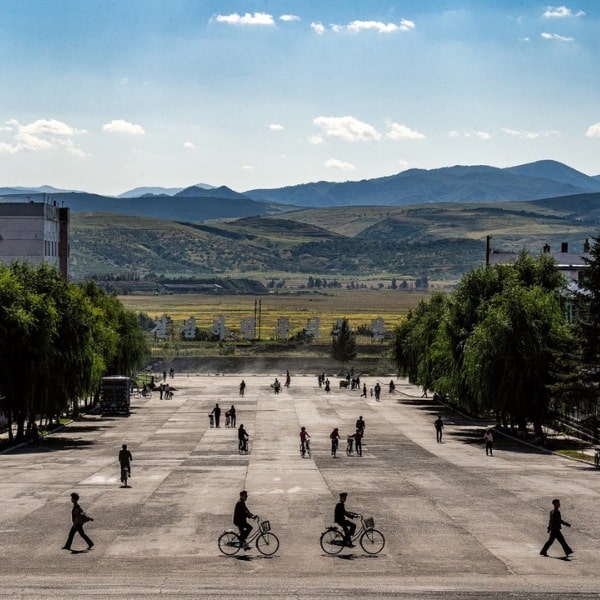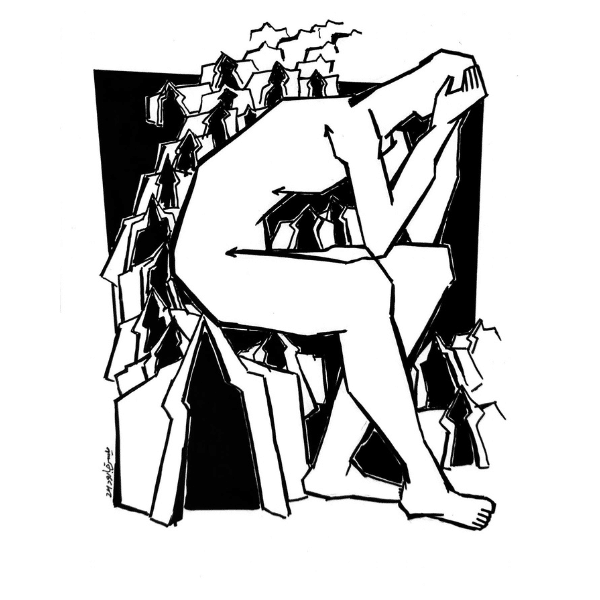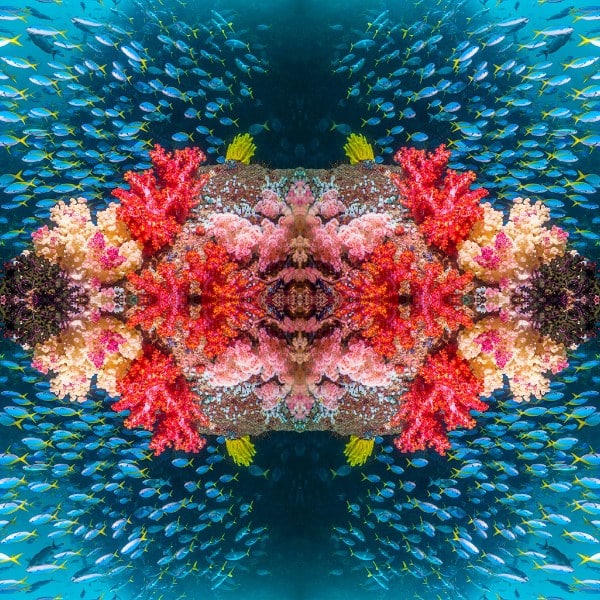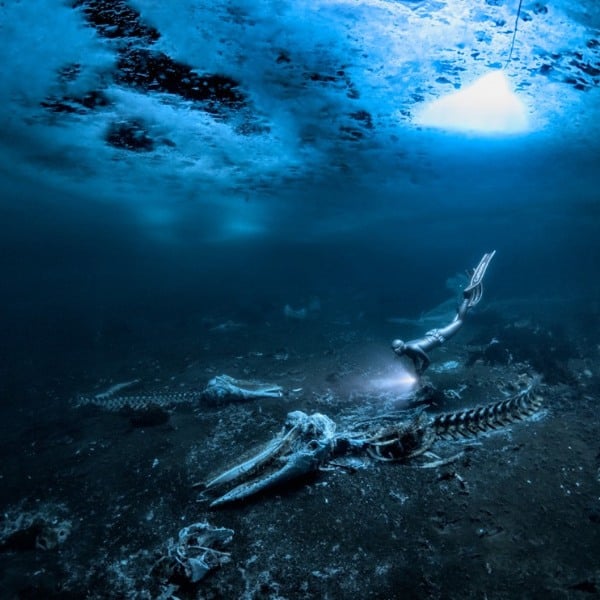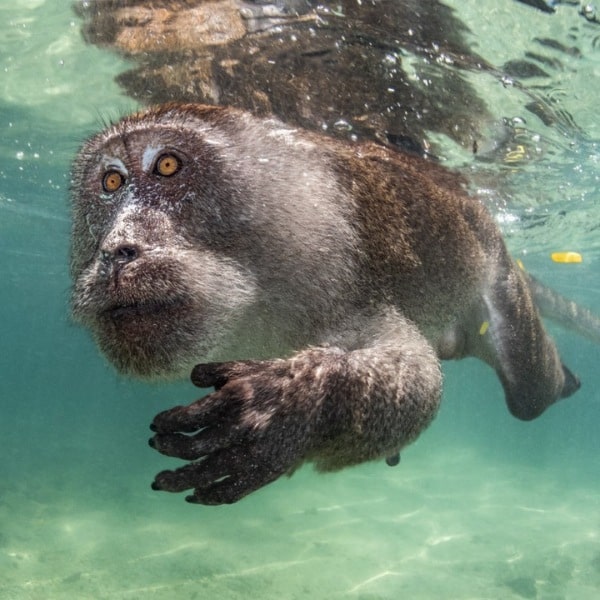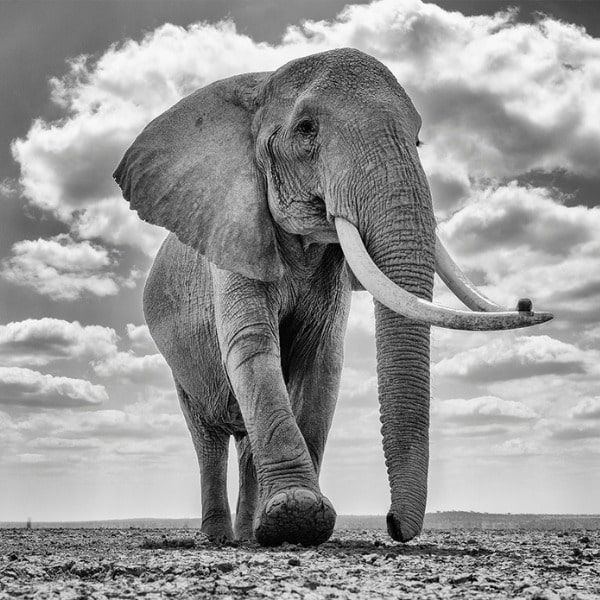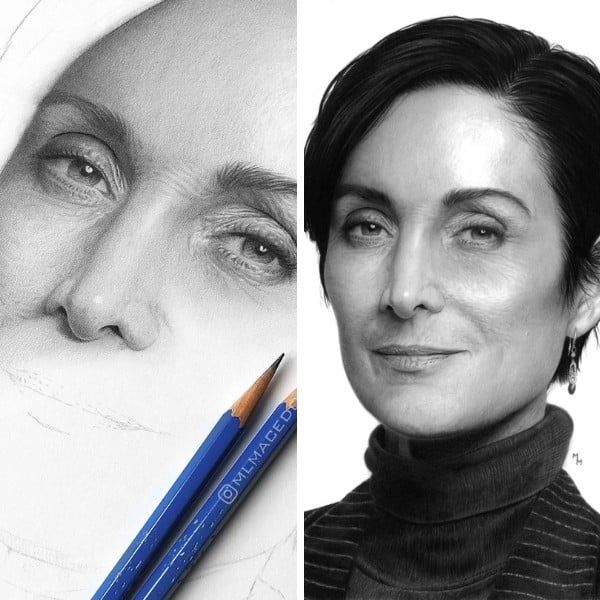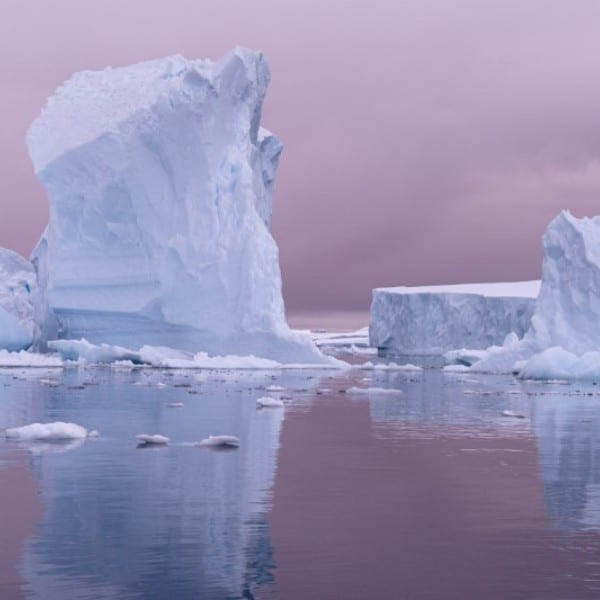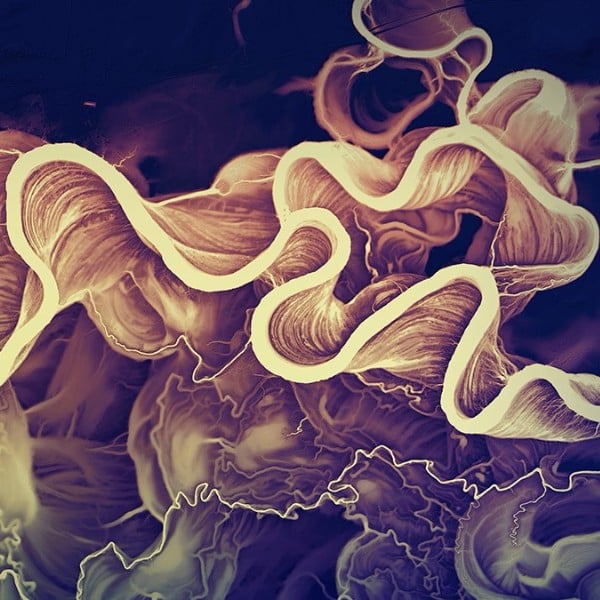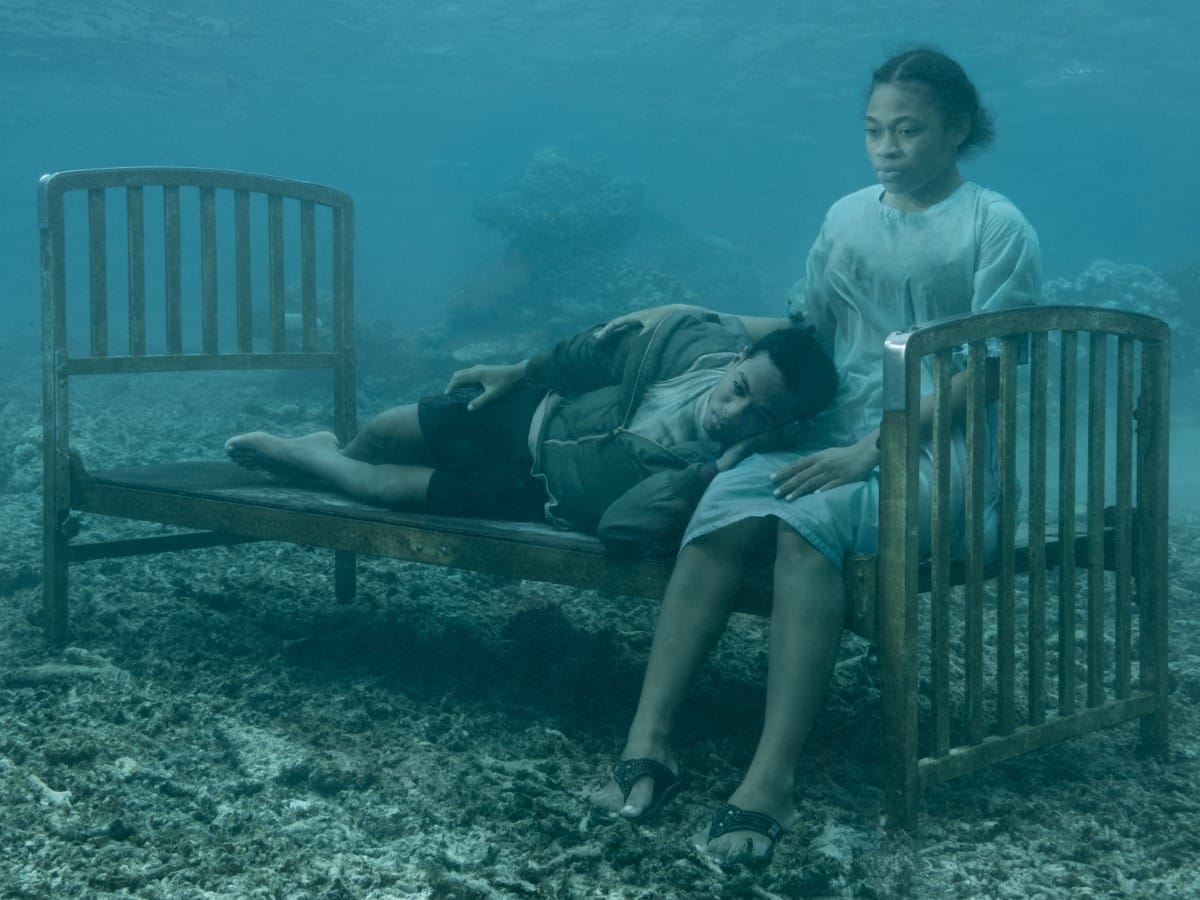
Serafina and Keanan on a Bed
For the third chapter of Nick Brandt‘s long-term project addressing climate change, the photographer traveled to the South Pacific to address the urgent issues surrounding rising sea levels. The result is SINK / RISE, an evocative set of underwater photographs featuring the young Fijians who will be most impacted by these rising waters.
While the Pacific Islands produce a minuscule amount of greenhouse gases, they are directly in the line of fire when considering the upcoming challenges that climate change is bringing. Brandt was sensitive to this situation and wanted to spotlight the vulnerability of the Pacific Islands when he conceived the project. And when selecting the models for the shoot, he ended up focusing on the next generation, who may see their homes disappear during the course of their lifetime.
After putting out a call to locals, Brandt selected about a dozen people to participate in the shoot. While feeling comfortable in the water comes naturally to most islanders, they still needed to remain relaxed and at ease during the underwater photo session. Assisted by a large crew and a local divemaster, the images were taken over the course of a six-week period that also included extensive training for all involved.
Taken at anywhere from 7 feet to 13 feet below the water's surface, Brandt's photographs are a reminder of what we risk losing. For Fijians, the possibility of losing their homes and their cultural heritage is very real.
We had the opportunity to speak with Brandt about SINK / RISE, including the challenges he faced on set and why he dedicates his artistry to projects about climate change. Read on for My Modern Met's exclusive interview.
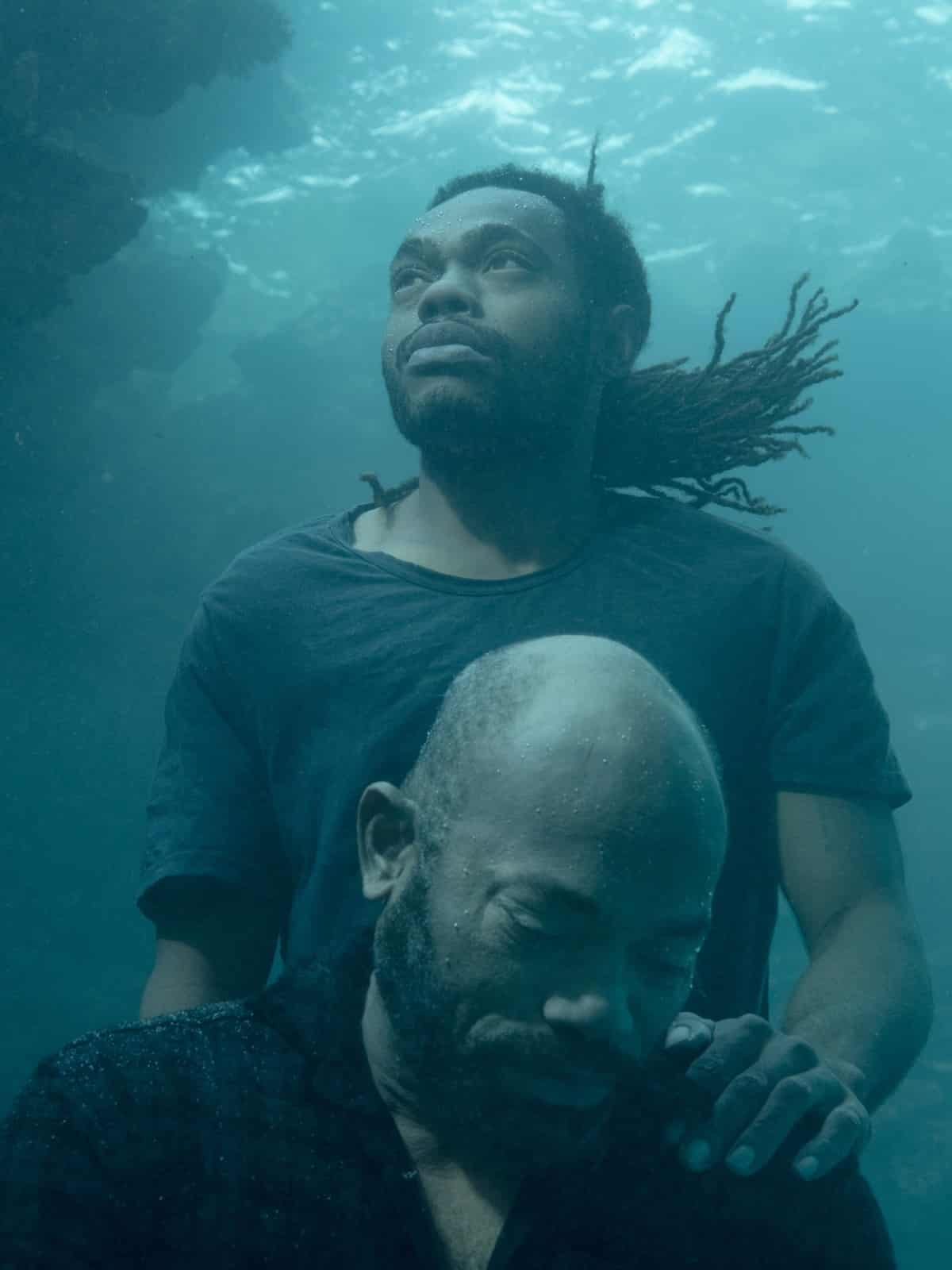
Ben and his father Viti
What inspired this project, and how did you come up with the concept?
I don’t believe that I can make a global series about climate change without at least one of the chapters relating to sea level rise. So I came up with this concept last year, which I felt was a visually symbolic approach to addressing the impact of sea level rise on the hundreds of millions of people around the planet.
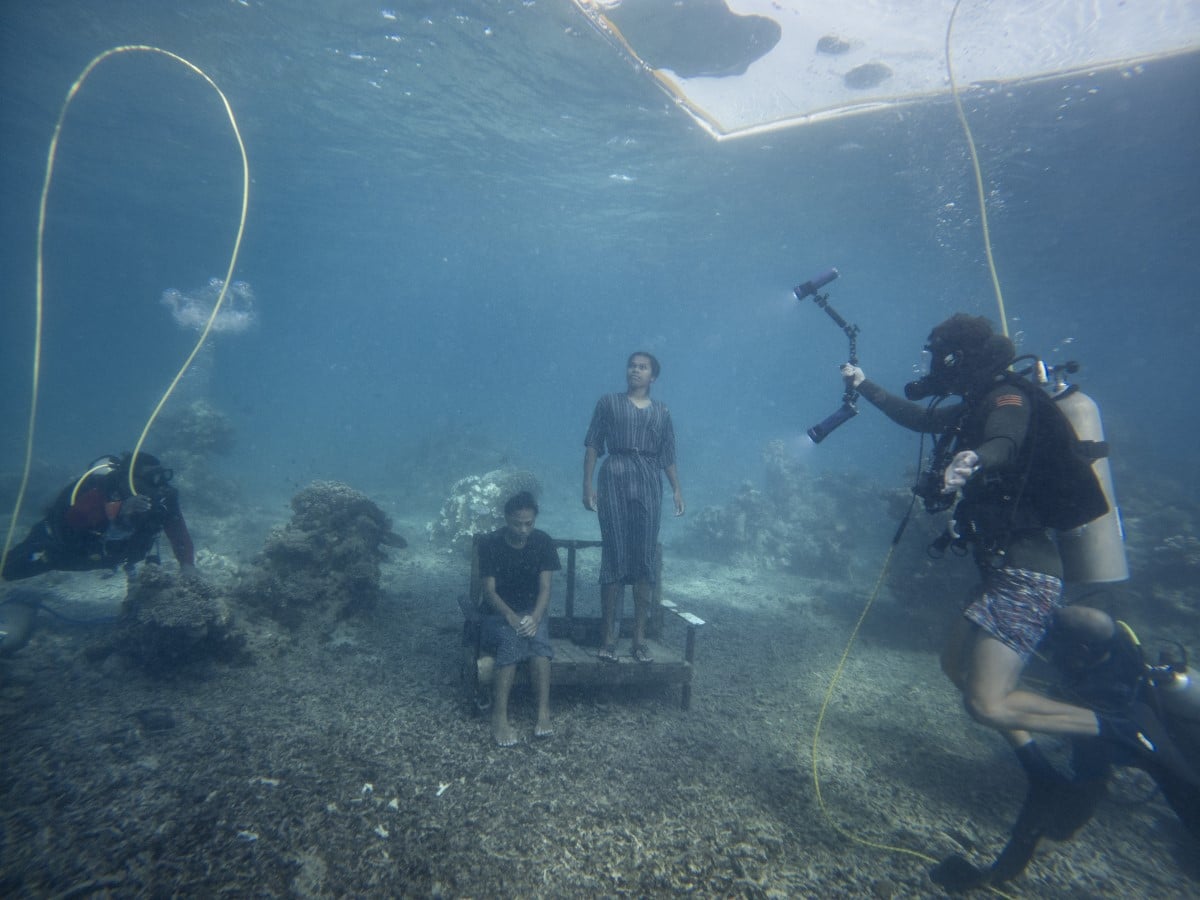
Akessa and Maria, Behind the Scenes
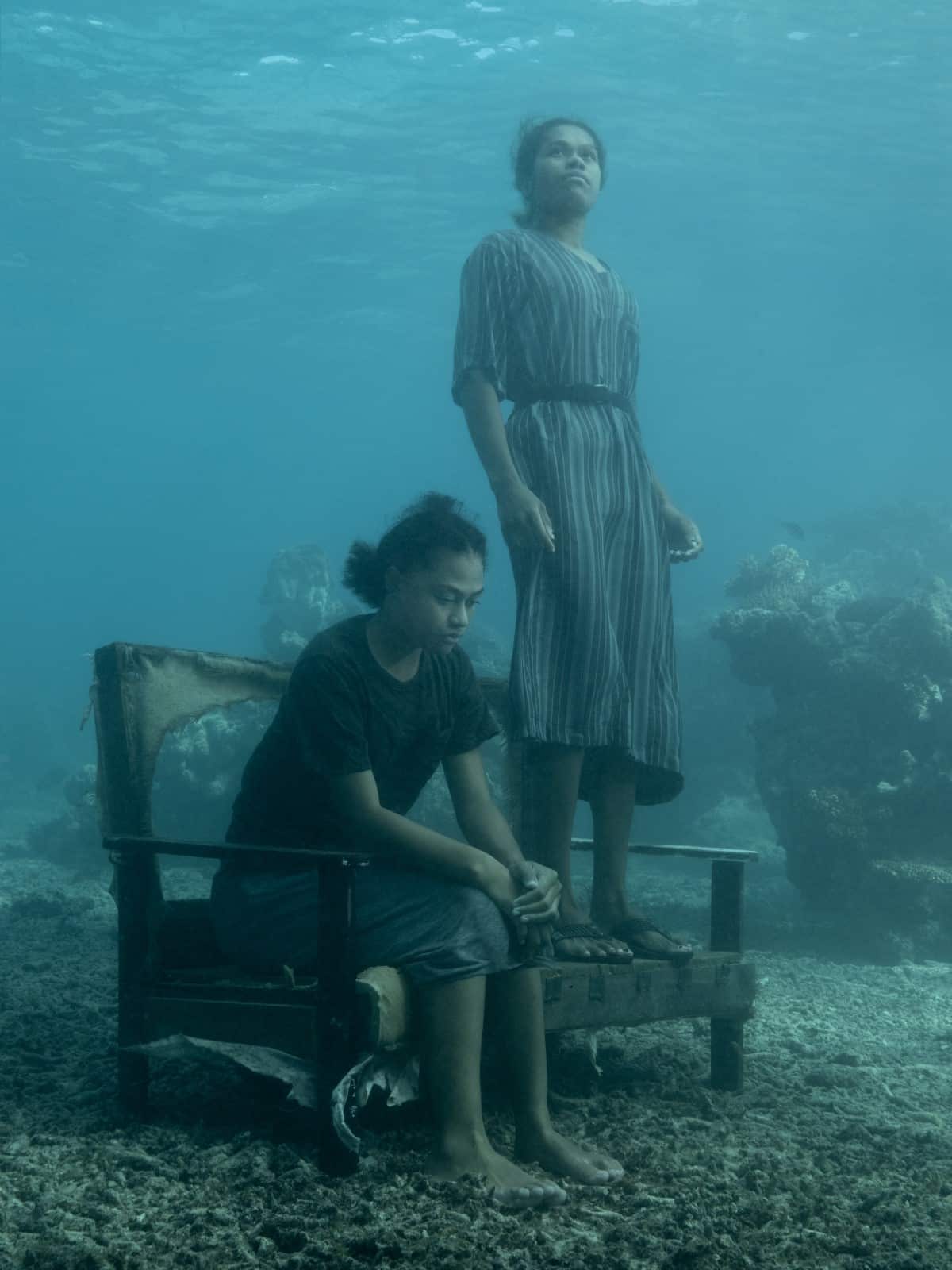
Akessa and Maria on a Sofa
Why did you decide to enter it around the Pacific Islands?
Many islands of the South Pacific are especially vulnerable to sea level rise. Many are barely a few meters above sea level, and so, in time, will disappear entirely. Their economies are also significantly based on the ocean that surrounds them. This is why I ended up choosing to photograph in this region of the world for SINK / RISE.
However, unlike in the first two chapters of The Day May Break, the people in these photos—all of whom live close to the ocean in Savusavu, on the island of Vanua Levu in Fiji—are representatives of those who, in coming decades, will lose their homes, land, and livelihoods to the rising oceans. In fact, some of the people in these photos live close enough to the ocean that they would lose their homes. Serafina and Keanan, for example, currently live just a few meters from the shoreline, and, considering how young they are, if they stay where they are, will be among those affected.
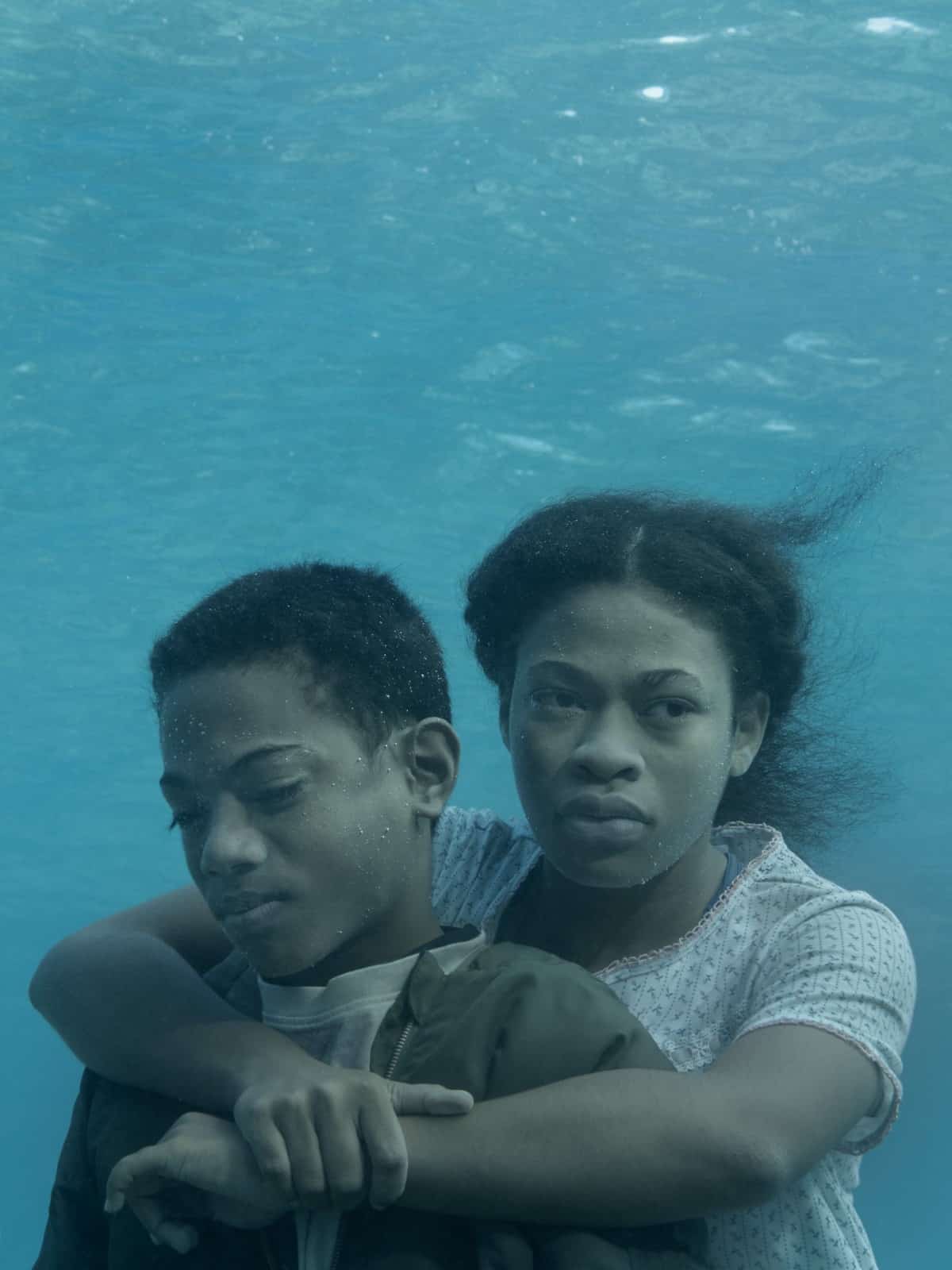
Serafina Holding Her Brother Keanan I
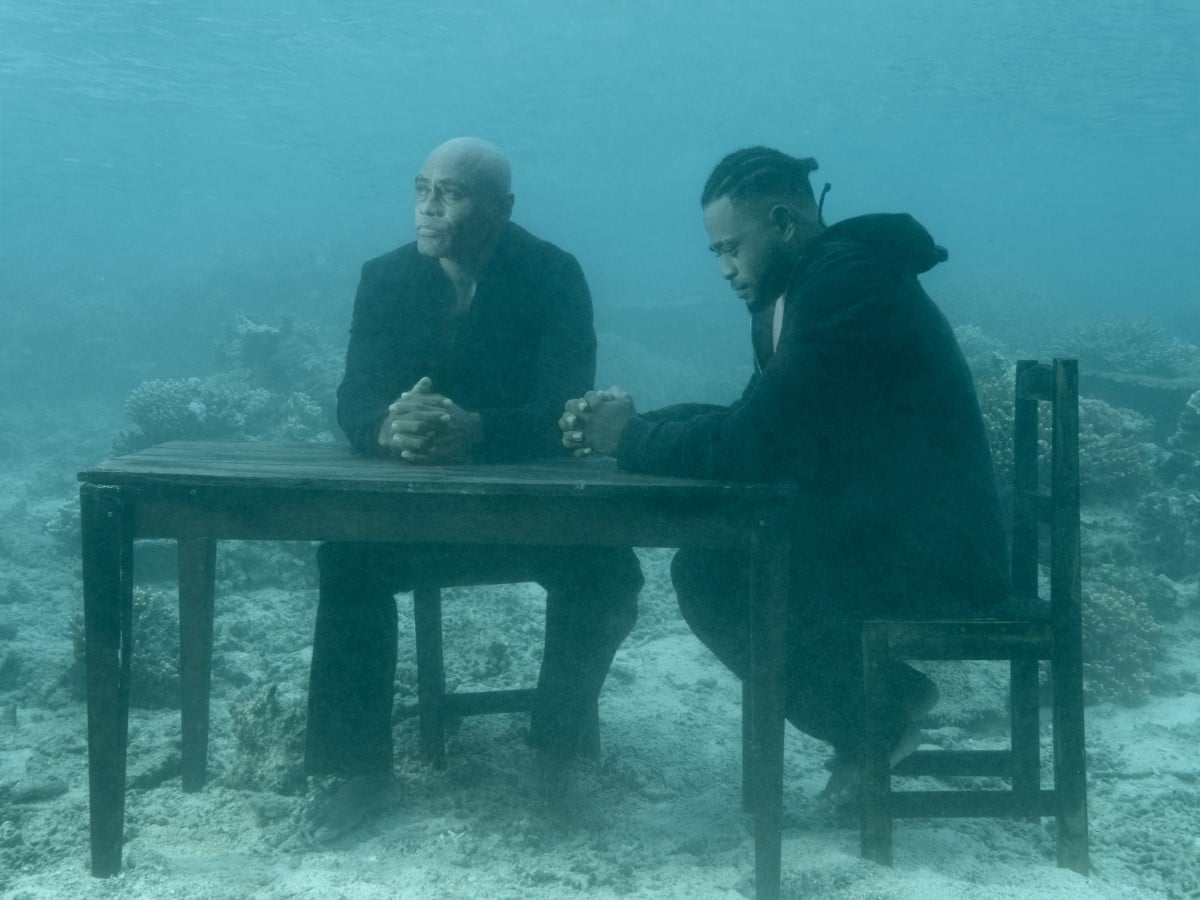
Joel and Sosi
What was the most challenging aspect of this shoot?
It’s always the elements. Conditions outside my control. On every previous shoot, it’s the weather that causes the biggest problems. This time, it was week after week of terrible visibility. I chose to shoot in April and May: in theory, after the rainy season, but before the water got too cold in the Southern Hemisphere winter.
In theory, the amount of plankton in the water was meant to be reducing in intensity, creating clearer water. But in reality, the opposite happened. As the shoot progressed toward May, the visibility actually got worse and worse. There was one period in May where the visibility was so bad that we were unable to shoot for nine long, expensive days. An unseasonably massive torrential storm generated a huge amount of muddy freshwater runoff from the island’s rivers. The ocean water just got greener and greener until it looked like we were swimming in a fetid, stagnant pond in the middle of a jungle. Totally unshootable.
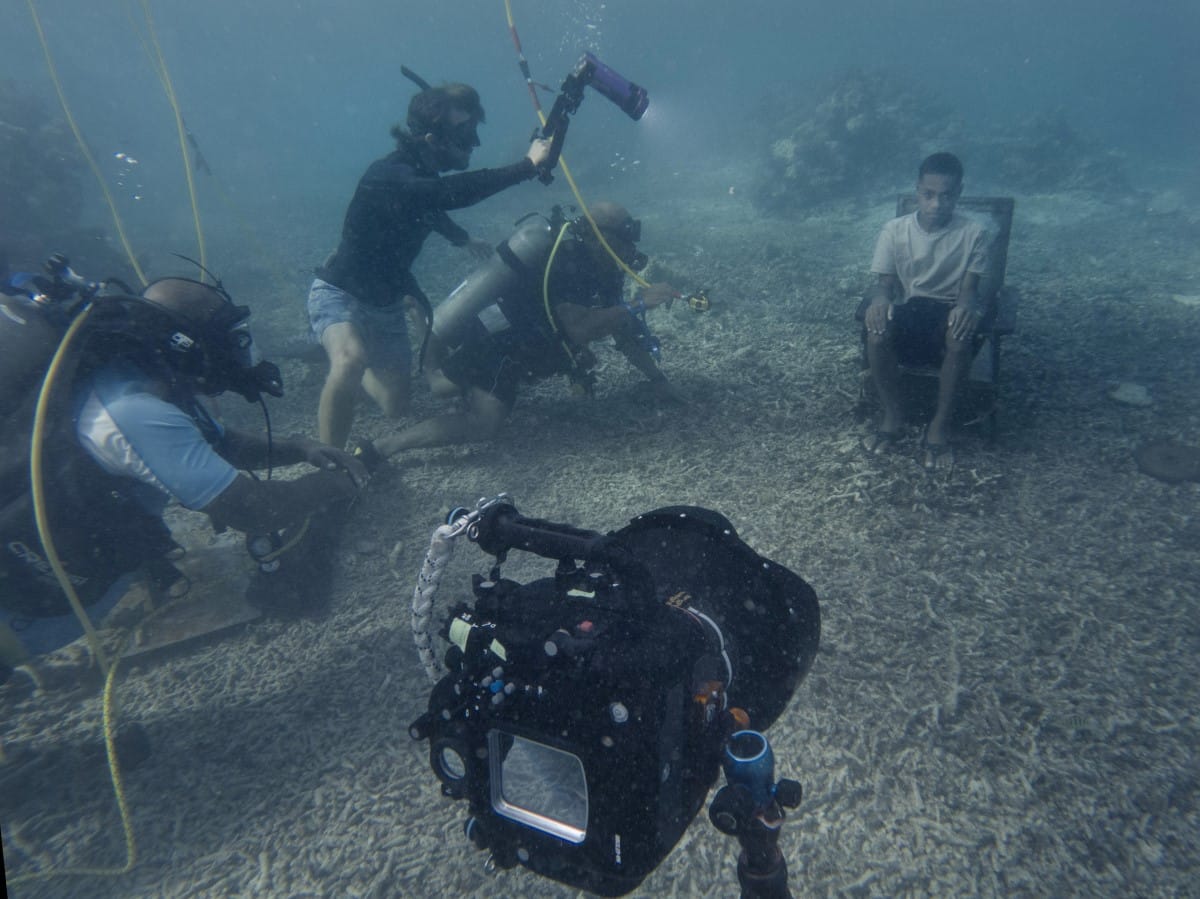
Mika, Behind the Scenes
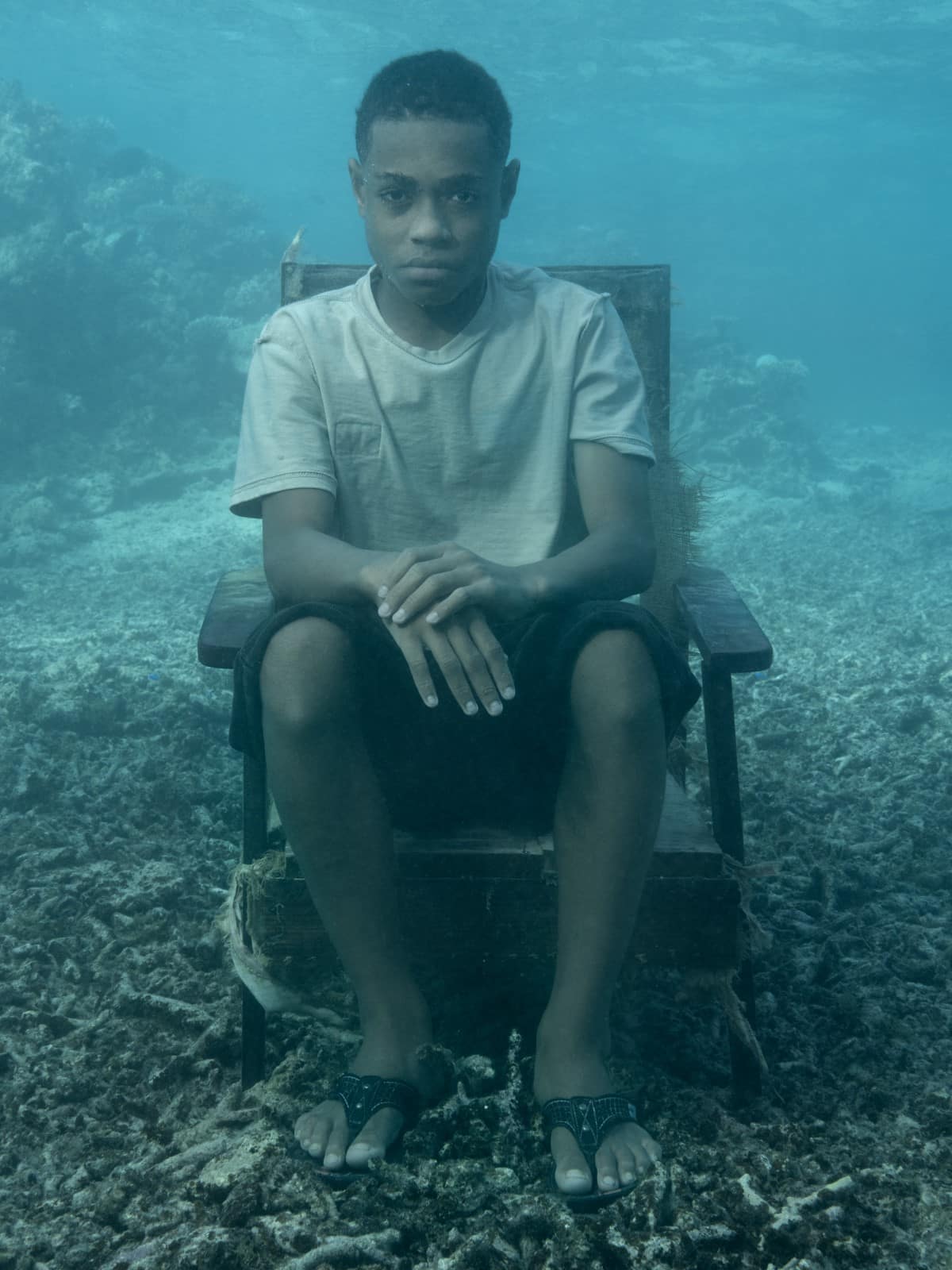
Mika
Why did you feel that it was important for you, as an artist, to lend your creativity to a project about climate change?
Well, this is an ongoing long-term project about climate change (and environmental degradation and destruction due to humankind), and this is the third “chapter” of the series (I am shortly embarking on the fourth).
For me, climate change is the single most important issue to ever face humankind. That’s why it’s important to me, and, quite frankly, I wish that it was to far more people also. Otherwise, we are sleepwalking our way to oblivion.
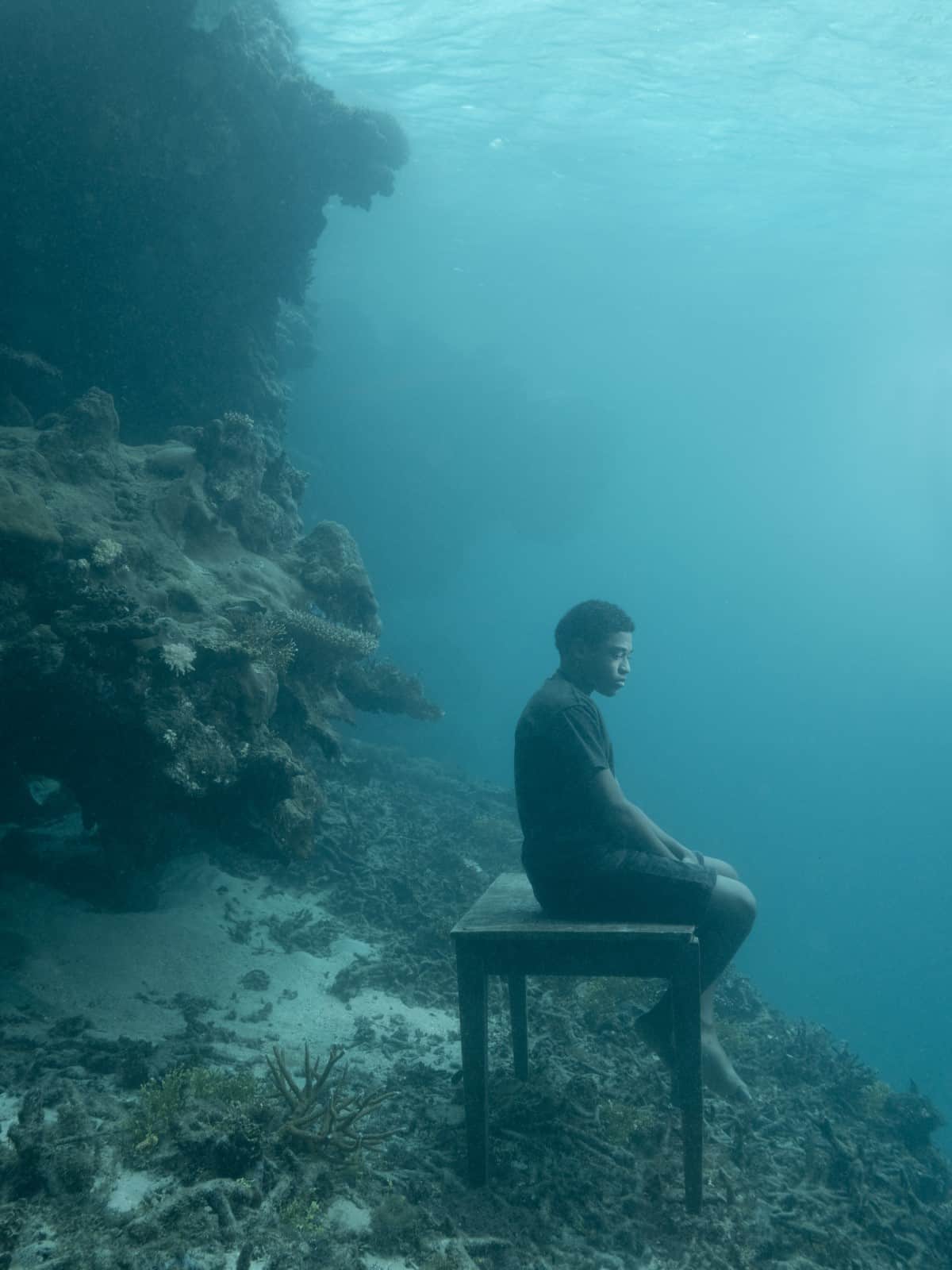
Petero by a Cliff
All of the models had to undergo intense scuba training. Can you share a bit about their personalities and how they reacted to the project?
A few of the cast were divemasters on the crew, so they needed no training. For the rest of the cast, it wasn’t intense training. They just needed to go through a basic course to get comfortable and familiar with the use of a regulator. All of them were already free drivers because they’ve grown up by the ocean, so it wasn’t a challenge for the young ones.
What are you most proud of when it comes to the images?
The cast—that the dozen or so Fijians that I worked with out of the probably 200 we auditioned were so relaxed and expressive while being photographed underwater.
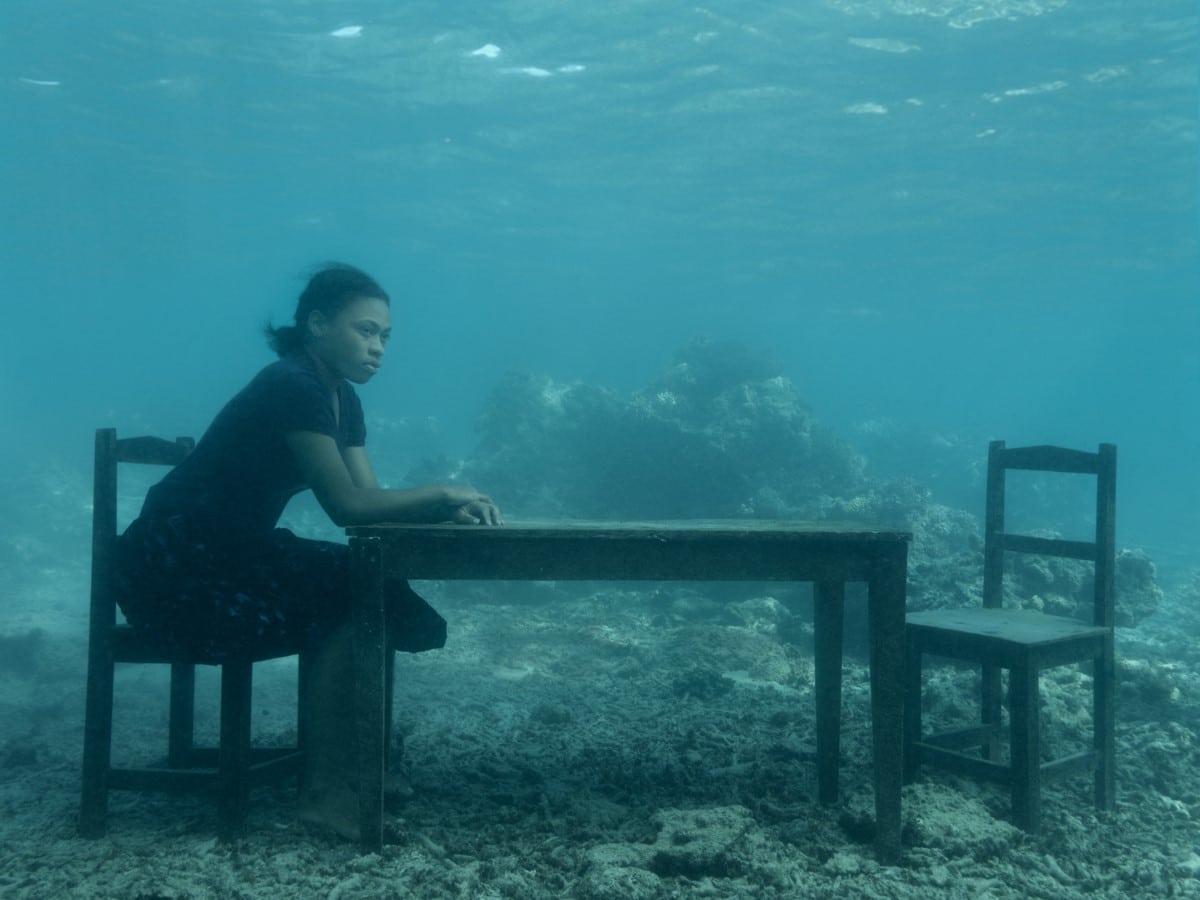
Serafina at a table
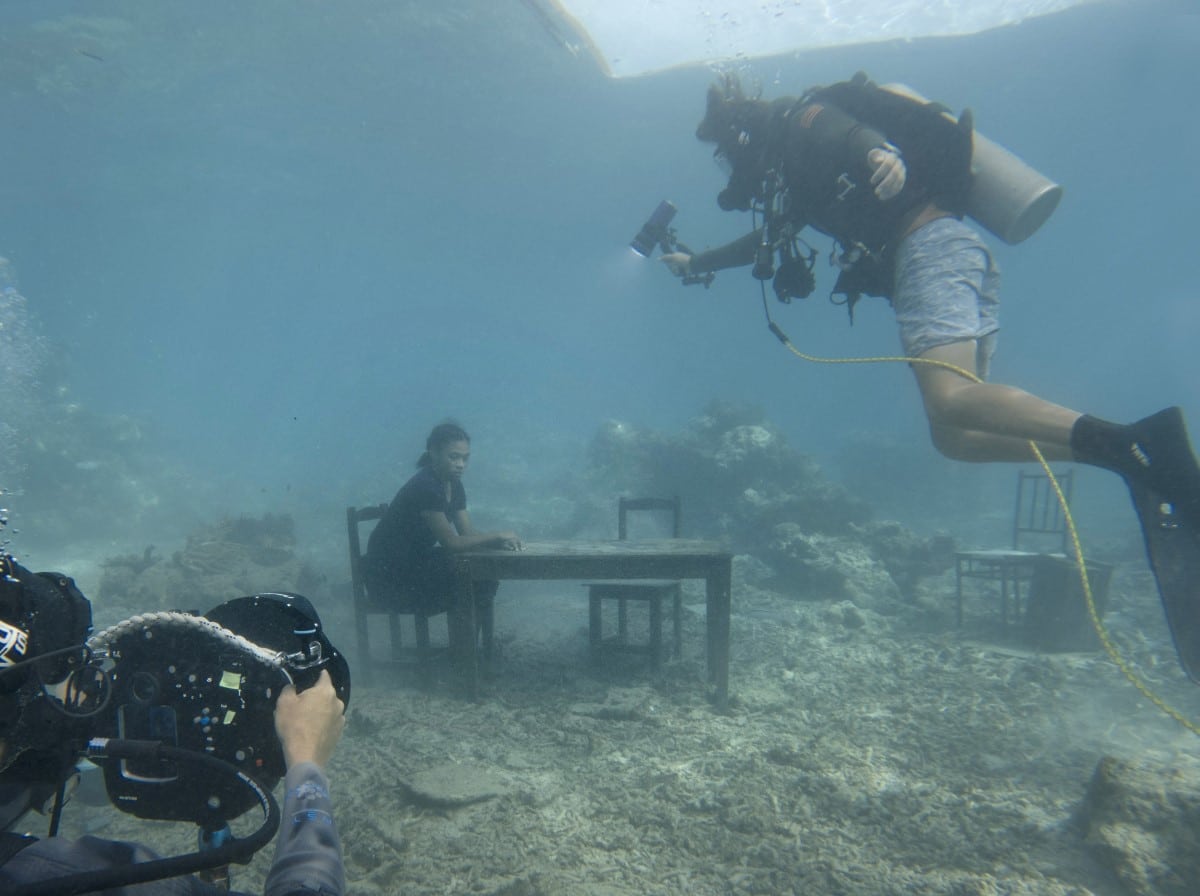
Serafina, Behind the Scenes
What do you hope that people take away from the work?
An indirect hope: that ultimately, everyone needs to become a good ancestor, to understand that we need to adopt a way of life that reduces the environmental impact that our actions will have on those billions of unborn yet to come. Can we show that we care about the humans and animals and trees that we will never live to see?
Nick Brandt: Website | Facebook | Instagram
My Modern Met granted permission to feature photos by Nick Brandt.
Related Articles:
Photographer Personifies Dire Climate Change Issues in ‘2.5 Seconds’ [Interview]
Cristina Mittermeier on the Environmental Trials and Tribulations of Antarctica [Interview]
Life-Size Portraits of Wildlife Installed in the Destructed African Lands They Once Inhabited
Striking Photos Document Lives of Indigenous People Most Impacted by Climate Change [Interview]











































































